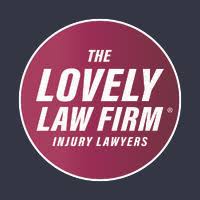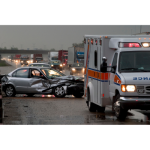In the 2021 South Carolina Traffic Collision Fact Book, it was revealed that left-hand turns contribute significantly to traffic collisions throughout the state, encompassing 8.9% of all car accidents statewide. Specifically, in 2021 alone, South Carolina experienced a staggering 24,300 left-turn accidents, and Myrtle Beach, a popular tourist destination, is no exception to this concerning trend. Despite its scenic coastal setting, the Myrtle Beach experiences its fair share of left-turn collisions, reflecting a broader issue prevalent across South Carolina's roadways.
In left turn accidents, determining fault can often be tricky. The dynamics of left turn collisions frequently involve multiple factors such as visibility, speed, and right-of-way issues. Consequently, assigning fault accurately is often important for insurance claims and legal proceedings. Myrtle Beach accident reports can be vital resources in when determining liability, as they offer unbiased documentation of car accidents surrounding left turn accidents. These reports serve as a source of truth, providing an impartial account of the events leading to the car accident and assigning fault based on factual evidence. As such, drivers involved in left turn accidents in Myrtle Beach often rely on these reports to establish liability, as it can be tricky to determine who is at fault.
Common Causes of Left Turn Accidents
Left turn accidents make up a significant portion of automobile collisions, with studies from the National Highway Traffic Safety Administration indicating that over 480,000 crashes involve left turns every year, which account for 36% of all intersection-related accidents. Various factors contribute to the prevalence of left turn accidents, including:
-
Obstructed Views When Turning – One common cause fo left turn accidents is obstructed views while making the turn, often due to obstacles such as parked cars, people, or vegetation.
-
Not Checking Before Turning – Additionally, inadequate surveillance, such as failing to check blind spots thoroughly, heightens the risk of left turn collisions.
-
Misjudging Speed Of Other Vehicles – Misjudging the speed of oncoming vehicles or miscalculating the gap across an intersection are also frequent causes of left turn accidents.
-
Illegal Left Turns – Failure to signal or yield the right-of-way are illegal left turns that further exacerbate the likelihood of accidents.
-
Distracted Or Drunk Driving – Distracted or intoxicated driving significantly increases the chances of left turn collisions, highlighting the need for heightened awareness and responsible behavior behind the wheel to reduce the chance of left turn accidents.
South Carolina Left Turn Law
In South Carolina, the law regarding left turns is designed to prioritize safety and efficient traffic flow, as well as reduce the amount of car accidents that occur. According to state regulations, drivers that wish to make a left-hand turn must yield the right-of-way to any oncoming traffic. This means that the responsibility and liability for these accidents lies with the driver making the left turn to ensure it can be done safely without impeding the flow of traffic.
South Carolina traffic regulations stipulate specific rules for left turns to minimize the risk of accidents, including:
-
Use Far Left Lane – For instance, drivers must use the lane that is the farthest left when available and travel in the same direction as traffic. When multiple lanes are present, left turns should only be made from a designated left-turn lane.
-
No Impeding Traffic – Additionally, left-turning drivers must only make a left turn when it is practical, prudent, and safe, as they can not obstruct the movement of other vehicles.
-
Follow Traffic Signals – At intersections controlled by traffic lights, drivers must follow signals, which means waiting for a green arrow to make a left turn. If there is no green arrow, drivers may proceed on a green light only when it is safe to do so.
-
Follow Right Of Way – In intersections without traffic lights, the right-of-way protocol applies, and drivers wanting to turn left must give right away to the car that arrived at the intersection first, followed by the vehicle on the right if multiple vehicles arrive at the same time.
Violating these regulations can result in legal repercussions as well as liability for injuries and property damage sustained in any accidents that occur. Understanding and adhering to South Carolina's left turn laws are crucial for safe and lawful driving practices on the state's roadways.
South Carolina Law Typically Deems Left Turn Driver Negligent
Left-turn accidents in South Carolina often result in the left-hand turning driver being deemed negligent. This is due to the fact that state laws require those making left turns to yield to oncoming vehicles and ensure they can safely make the turn before doing so. The responsibility falls squarely on the left-turning driver to ensure the roadway is clear of traffic, pedestrians, cyclists, and any other potential hazards before making the turn.
In some cases where another driver may have contributed to the accident, South Carolina's concept of modified comparative negligence comes into play. Under comparative negligence in South Carolina, if the left-turn driver is found partially responsible for the accident, their compensation may be reduced according to the percentage of fault they are assigned. Therefore, if the driver is found to be 80% at fault, they will be entitled to 20% of the total property damage or medical bills incurred.
There are instances where the driver making a left turn may not be at fault for the accident, despite the general presumption of fault outlined by traffic laws in South Carolina. These instances typically include:
-
Running A Red Light – One scenario in which the left turn driver is not at fault is when another driver runs a red light or stop sign, and collides with a motorist legally making a left turn. In such cases, the driver who disregarded the traffic signal is liable for the collision, absolving the left-turning driver of fault, especially if the left turn driver had a green arrow.
-
Speeding – Similarly, if a vehicle is speeding significantly above the limit and collides with a vehicle that is executing a lawful left turn, the speeding driver is typically held responsible for causing the accident. However, proving the speed of the oncoming vehicle can be challenging, and may require an in-depth investigation or expert analysis.
-
Reckless Driving – Instances of reckless driving, such as distracted driving or driving under the influence, can also shift liability away from the left-turning driver.
Nonetheless, establishing negligence and liability of the other driver is most important in left turn accidents, highlighting the importance of seeking legal counsel to navigate the complexities of left-turn accidents and pursue compensation. Consulting with an experienced Myrtle Beach left turn accident attorney is very helpful in explaining a driver’s rights and pursuing fair compensation if allowable.




